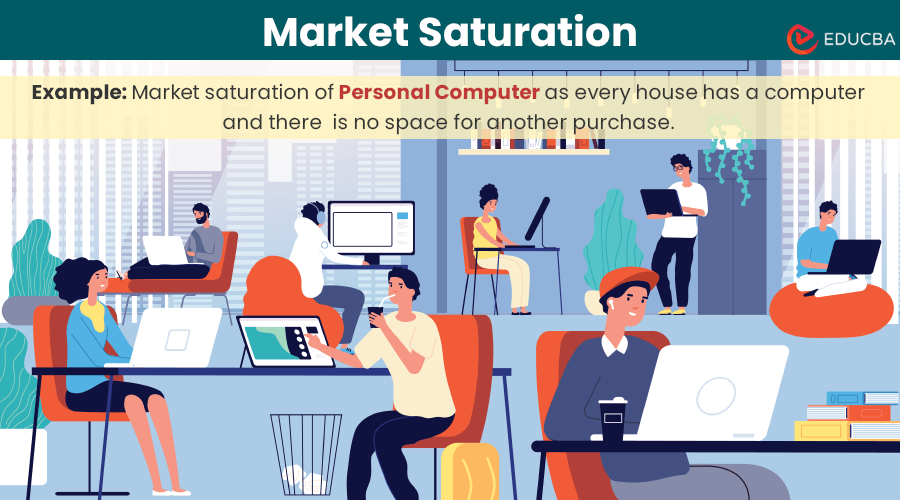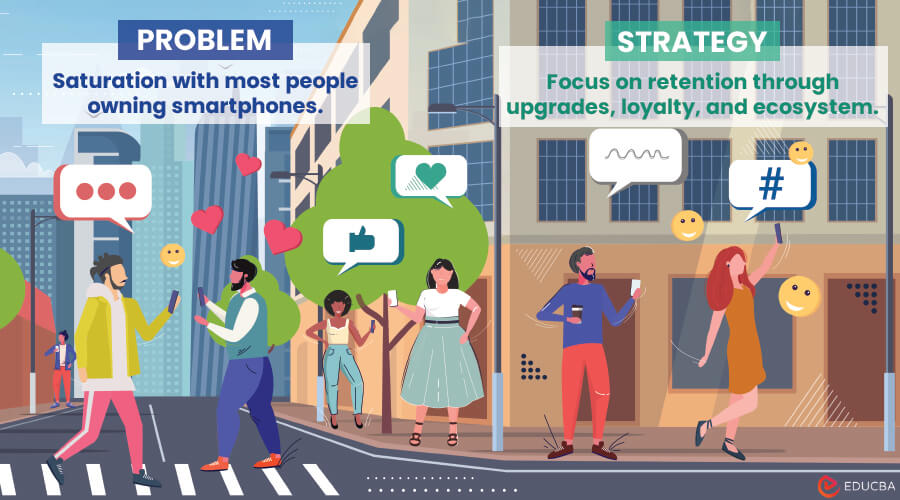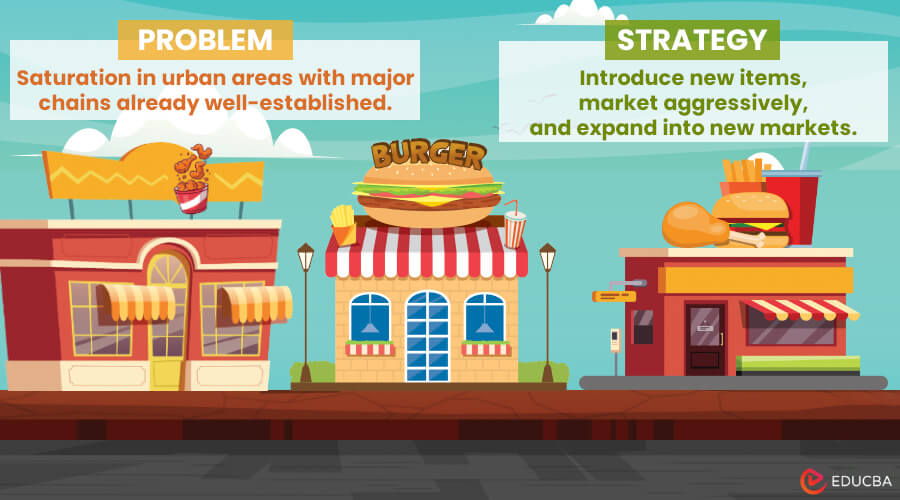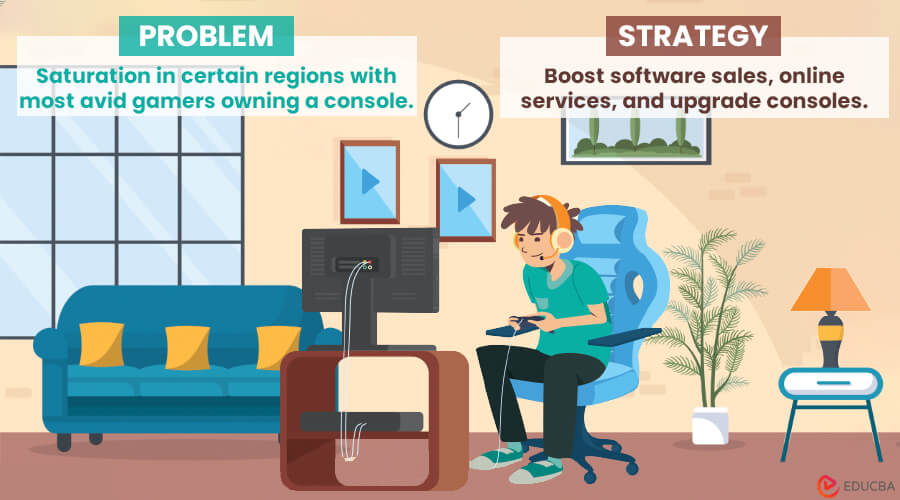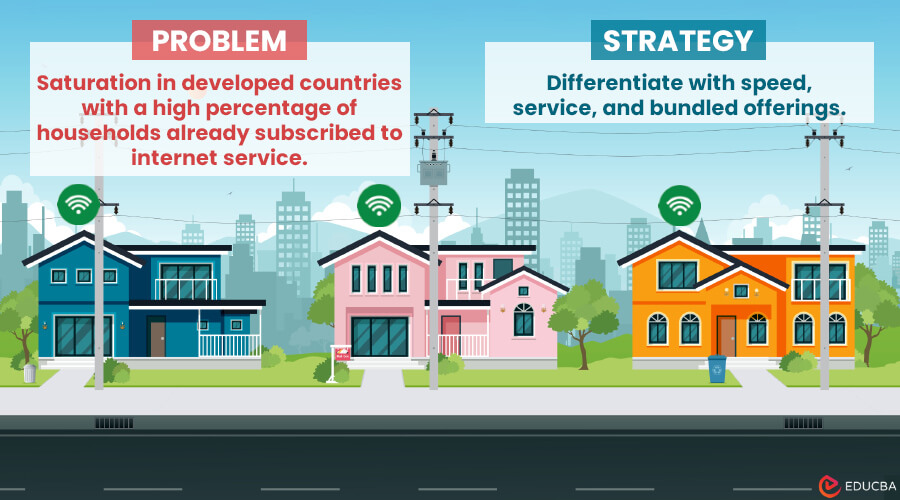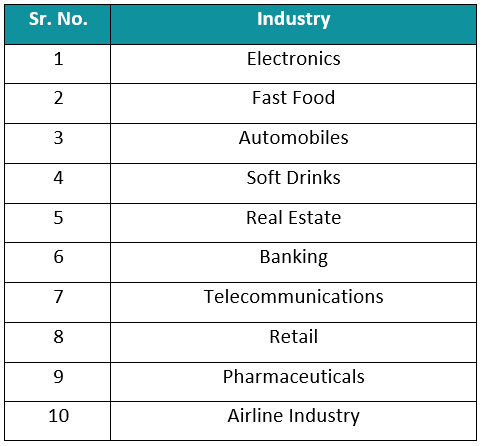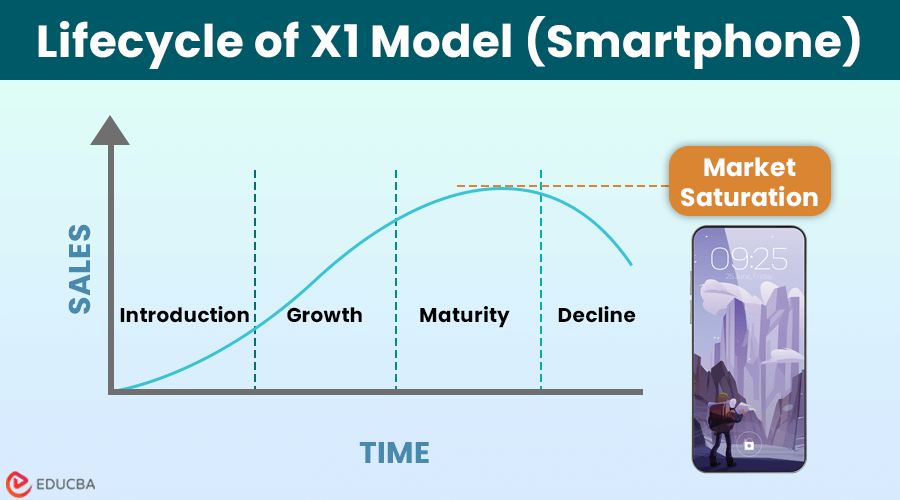What is Market Saturation?
Market saturation occurs when a maximum number of consumers have adopted a product or service in a specific market, and there is little room for further growth.
For example, the personal computer market has become saturated as many consumers already own a computer, and the frequency of replacements has slowed.
Once a market becomes saturated, companies may need to explore new markets or diversify their product offerings to sustain growth. They might focus on product innovation, entering untapped geographical markets, or targeting new customer segments.
Table of Contents
Market Saturation Examples
Example 1: Smartphone Market in Developed Countries
The smartphone market in developed countries is a classic example of saturation. In places like the United States, most people already own a smartphone. The market is mature, and companies like Apple and Samsung are no longer experiencing rapid growth in terms of new customer acquisition. Instead, they focus on retaining their existing customer base through product upgrades, brand loyalty, and ecosystem integration.
Example 2: Fast Food Industry
The fast-food industry has reached saturation points in many markets, particularly in urban areas. Major chains like McDonald’s, Burger King, and KFC have established a widespread presence. Opening new outlets in the same area might not result in significant growth as the market is already well-served. These companies often focus on introducing new menu items, marketing promotions, or expanding into emerging markets to sustain growth.
Example 3: Gaming Consoles
The market for gaming consoles, such as those produced by Sony (PlayStation) and Microsoft (Xbox), has become saturated in certain regions. Most avid gamers already own a console, leading companies to focus on software sales, online services, and introducing upgraded versions of existing consoles to cater to the existing user base.
Example 4: Home Internet Services
In many developed countries, the market for home internet services has reached saturation, with a high percentage of households already subscribing to a service. Companies in this sector often differentiate themselves through faster speeds, better customer service, or bundled services to retain existing customers.
Industries Prone to Market Saturation
Here is the list of industries that are often more prone to market saturation:
Types of Market Saturation
Learning the market saturation type helps identify the causes and find solutions to overcome decreased demand. The types are:
1. Micro Market Saturation
Micro-market saturation refers to a situation where a specific product or service has reached its maximum potential or customer base in a small, specific market.
2. Macro Market Saturation
Macro market saturation is when a product or service has reached its maximum potential or customer base across a broader, national, or global market.
Market Saturation Strategies
Market saturation strategies are plans that businesses use when they realize that there are already a lot of people using or buying their product in a particular market, and it is difficult to attract new customers.
Here are some market saturation strategies to overcome such situations:
1. Expand Product Offerings
- In this strategy, businesses can introduce new variations or complementary products that align with the existing customer preferences. For instance, if a company sells smartphones, they might consider offering accessories such as cases, headphones, or wireless chargers.
- Businesses can create combo offers/packages that include selling the main product along with related items. This can also provide customers with a cost-effective and convenient solution while encouraging them to buy more.
2. Explore New Markets
- Businesses can identify and enter markets in different countries where there is a demand for the product, but it hasn’t been fully explored. They can tailor marketing strategies to suit the cultural and regional preferences of the new market.
- They can even analyze demographics to identify new customer segments within the existing market.
3. Improve Product Quality or Features
- Businesses can invest in research and development to introduce innovative features or improvements in the product. This could involve technological advancements, sustainability features, or user experience enhancements that set the product apart from competitors.
- They can engage with customers to collect feedback and insights. Using this information, they can make strategic improvements that address any shortcomings or exceed customer expectations.
4. Customer Loyalty Programs
- Companies can set up a rewards program where customers earn points for each purchase. Customers can exchange these points for discounts, special products, or other attractive perks.
- Giving discounts to customers as per their likes and buys can make them feel special and valued. This makes customers more likely to stick with the brand and stay loyal.
5. Collaborations or Partnerships
- Businesses can collaborate with other businesses for joint marketing campaigns, leveraging each other’s customer bases. This can involve co-branded products, shared advertising, or mutually beneficial promotional events.
- For example, a smartphone company might partner with a popular app or service to enhance the overall value proposition for customers.
Case Study: Smartphone Lifecycle
In this case study, we will study a smartphone company called “ABC Mobile”. We will break down the life of their smartphone into different stages.
Stage 1: Introduction
ABC Mobile entered the smartphone market and launched the X1 model (a smartphone with new features). People liked it, but sales were slow as people were still getting to know this new player.
Stage 2: Growth
Once people started talking about the X1 model, the review and word of mouth increased sales. ABC Mobile made more phones to meet the demand. The X1 model was trending in the market, and ABC Mobile was making profits.
Stage 3: Maturity
After a certain period, the sales slowed down because of the market competition. Other companies launched phones with similar features. So, ABC Mobile had to be creative to stand out. ABC Mobile’s advertising campaigns highlighted the superior features, sleek design, and exclusive loyalty programs offered by their X1 model.
Saturation Stage
ABC Mobile faced a challenge when nearly everyone already owned a smartphone. This affected the sales of ABC Mobiles. They tried changing prices, doing promotions, and even selling in new places to keep up with the sales.
Stage 4: Decline
New fancy phones launched in the market, and the X1 was not trending anymore. ABC Mobile thought to discontinue the X1 model, but instead, they made it better with updates. They had to be quick and smart to meet people’s wants.
Conclusion
The product life cycle of ABC’s X1 model shows how smartphones go through ups and downs. To do well, companies like ABC Mobile need to keep making good products, change their plans when things slow down, and always stay one step ahead in the fast-changing world of phones.
How to Measure Market Saturation?
To measure market saturation, you can consider a few key indicators:
- Customer Base: Look at how many customers already use similar products or services in the market. If a large portion of the target audience already uses a similar offering, it suggests higher saturation.
- Sales Trends: Analyze the sales trends over time. If sales have been consistently high and are now plateauing or declining, it could be a sign of market saturation.
- Competitive Landscape: Find total competitors and their market shares. The market may be saturated if many players have significant market shares.
- Product Differentiation: Compare your product to existing offerings and assess its distinctiveness or uniqueness. If there is little differentiation, attracting new customers in a saturated market may be challenging.
- Geographic Expansion: Sometimes, a market may be saturated in one location but have potential in another. Therefore, determine whether specific regions are saturated in the market or if there are opportunities for growth in untapped areas.
- Customer Feedback: Pay attention to customer feedback. If customers express dissatisfaction or lack of innovation in the market, it might indicate saturation.
- Market Research: To understand consumers’ needs and preferences, conduct market research. If there is little demand for new features or products, it could be a sign of saturation.
Causes of Market Saturation
Here are some common causes of a saturated market:
- Increased Competition: When many companies offer similar products or services, they compete fiercely for the same group of customers.
- Limited Customer Base: If the number of potential customers is not growing, but new businesses keep entering the market, it becomes saturated.
- Slow Demand Growth: When the demand for a product or service grows slowly or remains stagnant, it can lead to market saturation.
- Lack of Product Differentiation: If most products in the market are very similar, customers may not have a strong reason to choose one over another, contributing to market saturation.
- High Entry Barriers: If it’s difficult for new businesses to enter the market due to high costs or regulations, existing companies may dominate, leading to saturation.
- Market Maturity: In some industries, markets naturally reach a point where almost everyone who wants a product already has it, resulting in saturation.
- Technological Advances: Rapid technological advancements can sometimes lead to saturation as multiple companies try to capitalize on similar innovations.
- Overexpansion: If businesses expand too quickly without a corresponding increase in customer demand, it can lead to oversaturation.
Frequently Asked Questions (FAQs)
Q1. What role does consumer behavior play in market saturation?
Answer: Consumer preferences and behaviors significantly impact market saturation. Changes in preferences, demographics, or lifestyle can contribute to saturation or open new business opportunities.
Q2. How does market saturation affect pricing strategies?
Answer: Companies in a saturated market may engage in intense price competition to gain or maintain market share. This often means lowering prices to attract more customers. However, this strategy can lead to lower profit margins. Also, companies may find it difficult to raise prices. If they do so, they might lose their customers to competitors.
Recommended Articles
We hope you found this EDUCBA article about market saturation helpful. EDUCBA suggests the following articles for more information on economics-related topics:
